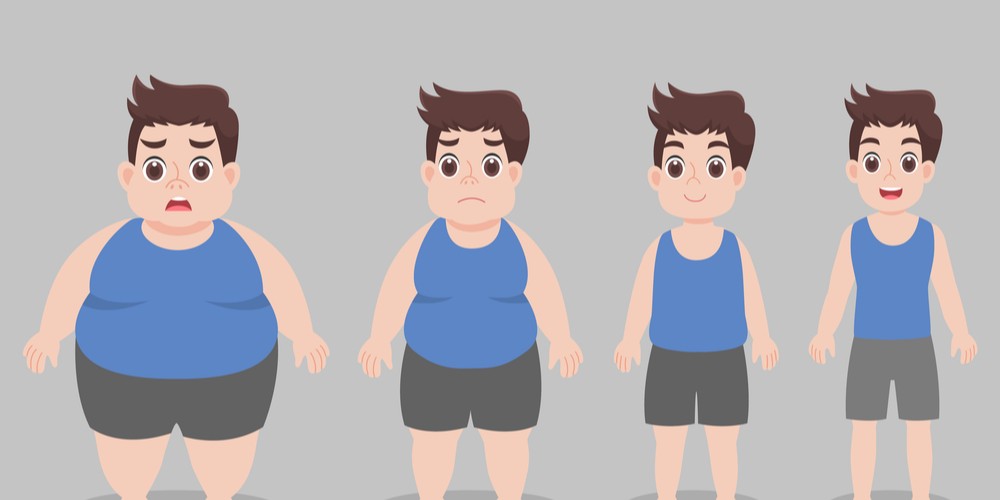Do you have a lot of weight to lose, but don’t see the numbers on the scale changing? You’re not alone! Many people experience this frustrating phenomenon. In this blog post, we will discuss some possible reasons why you may be losing inches but not weight. We will also provide tips for how you can start seeing results on the scale. Keep reading to learn more!
Contents
Why Am I Not Losing Weight Even Though I Look Thinner?
If you are losing inches but not weight, it could be because of your changes in water retention or body hydration levels. If you’re eating less salt or drinking more water, your body may retain less water and this can reduce your overall weight.
It’s also possible that your metabolism has slowed down due to a decrease in calorie intake or an increase in physical activity. May not be getting enough sleep plays a major role in weight regulation, and a lack of restful sleep can lead to difficulty losing weight. If you are consistently skimping on your shuteye, it could be contributing to your struggle with the scale. Aim for 7-8 hours of quality rest per night to ensure that your hormones and metabolism are functioning properly.
Building Muscles
- Incorporate Strength Training: Strength training is an important part of any weight loss journey. Not only does it help build muscle and raise your metabolism, but it also increases your overall calorie burn. Aim to incorporate strength-training exercises at least two to three times per week.
- Be Patient: Weight loss takes time and consistency. If you’re not seeing results on the scale, don’t give up! Keep going and know that it takes time for your body to adjust to all of your healthy lifestyle changes.
- Get Enough Sleep: Lack of sleep can have a negative impact on your metabolism and hormone levels. If you’re having trouble sleeping or are feeling fatigued, make sure to incorporate more restful activities into your routine.
- Reduce Stress: Stress can lead to weight gain, so make sure you’re taking steps to reduce stress in your life. Consider starting a mindfulness practice or engaging in regular physical activity to help manage stress levels.
Experiencing Water Retention
There are also lifestyle factors that can affect weight loss such as sleep, stress levels, and hormones. The tips outlined here will help you start seeing results on the scale if you have been losing inches but not weight. Remember to focus on fat loss rather than the number on the scale, and don’t be discouraged by plateaus along your journey — they are part of any successful healthy lifestyle change!
The most important thing to remember is that a number on the scale doesn’t necessarily reflect your overall health or even your actual body composition. When you focus on fat loss rather than weight, you are more likely to see results in terms of inches lost and muscle gained. Keep these tips in mind as you work towards your goals and celebrate each success along the way! Even if you’re not seeing results on the scale right away, know that every healthy choice and step forward matters!
Know the Truth About Weight
It’s important to remember that not all weight loss happens on the scale. When you are working hard and changing your lifestyle, it is possible to see results without seeing a big change in the numbers on the scale. Your body composition may be shifting, even if it doesn’t show up right away. Muscle is denser than fat and takes up less space, so you may be losing fat and gaining muscle without seeing a big change in your weight.
Focus On Fat Loss, Not Weight
If you want to see results on the scale, focus less on the number and more on fat loss. You can do this by creating a calorie deficit, which means that you need to burn more calories than you consume through food and drink. This can be achieved through a combination of diet and exercise. Additionally, consider tracking your progress with body measurements such as circumference measurements around your waist, hips, thighs, arms, and other areas. These numbers can show changes in inches that might not otherwise be reflected in the scale’s weight reading.
What Are The Stages Of Losing Weight?

The stages of losing weight can vary depending on an individual’s goals and body composition. However, in general, there are four main stages that most people experience when attempting to lose weight:
Pre-Weight Loss Stage
This is the stage where you assess your current state and create a plan for how to reach your fitness goals. During this stage, you should focus on forming healthy habits and setting realistic goals.
Weight Loss Initiation
This is the beginning of your weight loss journey where you start to make changes in your diet and exercise routine. At this point, it’s important to remain consistent and track your progress as you go along.
Weight Loss Maintenance
During this stage, you’ve achieved your goal weight and begin to focus on maintaining it. This can involve adjusting your lifestyle habits if needed, such as continuing to exercise regularly or eating healthy foods.
Weight Loss Sustainability
The final stage of weight loss is all about long-term sustainability. This may include continuing to eat a balanced diet, maintaining an active lifestyle, and managing stress levels.
Is Inch Loss Better Than Weight Loss?
Inch loss is not necessarily better than weight loss, as both are important for maintaining a healthy lifestyle. While the number on the scale can be an indicator of progress, it doesn’t always tell the whole story. Inch loss measurements can help you track progress in terms of muscle gain and fat loss even if your weight isn’t changing significantly.
Ultimately, focusing on both inch loss and weight loss is important for long-term success. Weight loss can be a tricky journey to navigate. If you’re feeling discouraged by the number on the scale, remember that inch measurements are also an important way to track progress.
Tips For Seeing Results On The Scale
 Here are a few tips to help you see results soon:
Here are a few tips to help you see results soon:
- Eat Enough Calories: Make sure that you are eating enough food to meet your energy needs and fuel your workouts. If you’re not consuming enough calories, your body may go into “starvation mode” and start holding onto fat.
- Get Adequate Protein: Protein is essential for building muscle and losing weight. Aim for 1-2 servings of lean protein per meal, such as chicken, fish, eggs, or turkey.
- Track Your Intake: Keeping track of what you eat can be helpful in understanding how many calories you are taking each day. Writing down what you eat can help with accountability and ensure that you don’t overeat.
Conclusion
Losing weight can be a difficult journey, but it is possible with dedication and consistency. Remember to stay patient and focus on forming healthy habits that you can maintain in the long run. Tracking your progress using inch measurements as well as weight measurements will also help you stay motivated and reach your goals.
Consider contacting FitMantra for additional information on nutrition and fitness. You can also get in touch with their nutrition experts through our online nutrition counseling, who can guide you through the process and help you achieve your fitness goals. You can also lose weight with the help of our weight loss program. Download our FitnessApp on Android to know more about us.



I like this website it’s a master piece! Glad I found this ohttps://69v.topn google.Raise your business